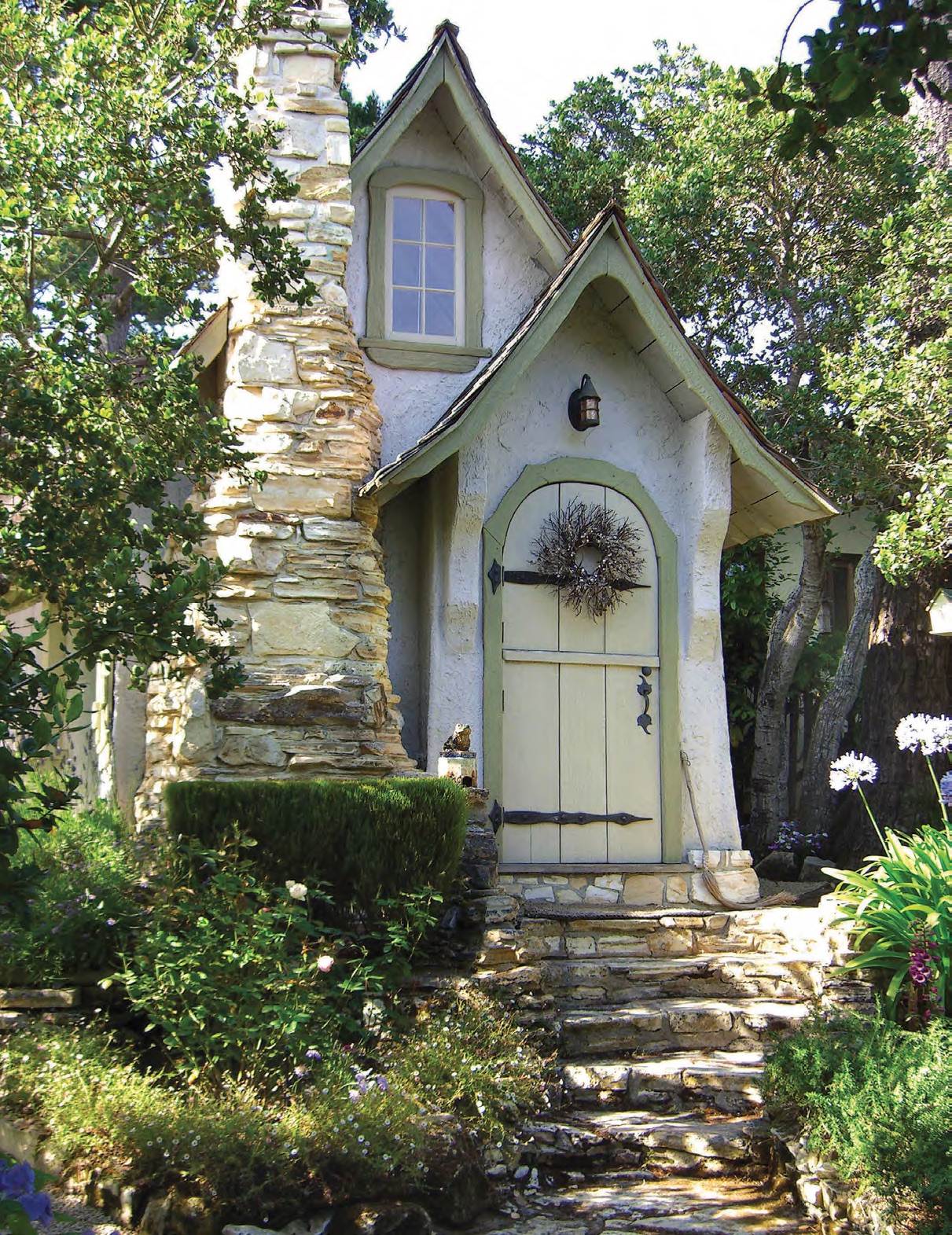Feature Image: ©Jerry Warner
On the shores of a briny deep, under skies so blue and clear they resemble tears, there perches a village with the magical name of Carmel-by-the-Sea. It’s peaceful here, the loudest sound the boom of the ocean, which the little town slopes inexorably, if gently, toward. The cool air is fragrant with the clean, crisp scent of the pine and cypress trees which dot the landscape, many gnarled and wise as a long-lived wizard. Everywhere, sprouting from window boxes in the jewel-like downtown and around the tiny, perfect houses, are flowers. As if under a spell, they all appear to be blooming at once. And then around a corner, like a gift, sits a wee cottage. It’s half-timbered and bright with whimsy, its roofline pitched toward the heavens, the stone chimney haphazardly stacked as if by mischievous elves. Its name is Hansel and it’s the small, sweet heart of the town.
And so it has been for nearly a century in Northern California’s Carmel-by-the-Sea. Bold Spanish missionaries roamed the land in the long-ago days, beguiled by the rich soil and plentiful water, but the town that arose there stayed sleepy until the early twentieth century, when artists began to make their way to it. Painters and actors, musicians and writers came south from San Francisco, fleeing the great earthquake and seeking inspiration in the graceful countryside. Over the following years luminaries like Jack London, George Gershwin, Robert Lewis Stevenson, and Charlie Chaplin would live in or visit Carmel. By then a thriving artist colony of no small renown, the town was finally incorporated in 1916.
But it wasn’t for another eight years that the man who would forever change the face of Carmel arrived. Hugh Comstock came from the cornfields of Illinois, a farmer’s kid who loved to draw and design, even if it was only the outbuildings on his family’s property. He
was visiting his sister, but in a moment that must have shimmered with the glimpse of a previously unimagined future, he happened upon a young woman at work in her backyard. Intent on her task, unaware of the enchanting tableau she made, Mayotta Brown was painting the faces of little felt dolls she’d fastened onto her clothesline.

Two months later, Comstock and Brown wed. Four months after that, in 1924, he began building the two-hundred-forty-four-square-foot cottage that would become known as Hansel to house the growing assortment of his wife’s increasingly popular Otsy-Totsy dolls. Soon townsfolk were lining up, begging Comstock to design a fairy tale home for them, too. He did; some eighteen of them, establishing an architectural movement that continues today. “Carmel has always prided itself on being different,” notes Carmel Heritage Society board member Jonni Craven. “And the buildings that appeared in the 1920s were different from anything else. The style of architecture at that time was Spanish-Mediterranean. So when these Tudor-style structures appeared with flared eaves and hand-hewn trim and irregular chimneys that looked like a pile of rocks, it enchanted the town because it was different from anything that they’d seen before.”
Comstock was not the only visionary at work in Carmel. The fanciful structures that ring the Court of the Golden Bough, including the Cottage of Sweets, a half-timbered confection with an undulating roofline, pre-date Hansel. Built by cellist and attorney Edward Kuster to surround his Theatre of the Golden Bough—a long-dreamt-of project he named for the ancient Latin epic poem The Aeneid—they were home to small shops and artist studios. They still stand, filled, like so much of Carmel’s gracious downtown, with upscale, inspired boutiques, galleries, and eateries.
So, too, does Comstock’s sole commercial design, the iconic, pleasantly plump Tuck Box, which now houses a tea room renowned for its scones. Throughout the town, other fairy tale buildings have risen over the years, some private residences, others sheltering businesses, such as the Lamp Lighter and Happy Landing inns. Comstock’s cottages commissioned by his bewitched neighbors remain, too, reminding all of the love story of Hugh and Mayotta. By every account the pair spent the next twenty-six years, until Hugh’s death in 1950, as smitten with each other as they were on the day they met. How splendid must it be to reside in one of those cottages, crafted as a result of such enduring affection?
“It is a treasure to live in,” confirms Stephanie Kirz, who owns Curtain Calls, a meticulously restored Comstock erected in 1929 and owned by writer Constance Ferris. It took six months for Kirz to bring the badly dilapidated home back to life, but many of the original features remain, such as the stucco walls made rough with pine needles and plastered over burlap, and the wavy, wood-shingled roof. Inside, touches like a little loft enclosed by a white picket fence with heart-shaped cutouts enhance the charm. “Everyone who visits falls in love with the elements that give it its fairy tale feel,” she adds. “Sometimes I even imagine there are fairy spirits dancing at night under the big oak trees in the yard.”

Perhaps inspired by Comstock and the fairy tale buildings that line its tranquil streets, Carmel-by-the-Sea has fought to retain, against the odds, its idyllic beauty. Sage city officials have ensured no tacky boardwalks, unsightly parking meters, or even sidewalks mar its perfection. Fast food restaurants have dared not encroach and even streetlights have been nixed, the better to spy all those lonely stars glittering diamond-like in the night sky. Yes, Carmel-by-the-Sea remains a real-life Brigadoon, a much-needed bit of magic in this weary modern world.
“People like Carmel’s quaintness and I think part of that is its architecture,” muses Gael Gallagher, a long-time area guide and naturalist. “The lots are small, and even if it’s not a Comstock, it’s still a little cottage. It’s small-town America in a very delightful way, on a sloping hill to the ocean. It’s a happy place, a place to get out of your head and go into your own fairy tale. All is right with the world in Carmel-by-the Sea.” For more information, visit Carmelcalifornia.com.

































